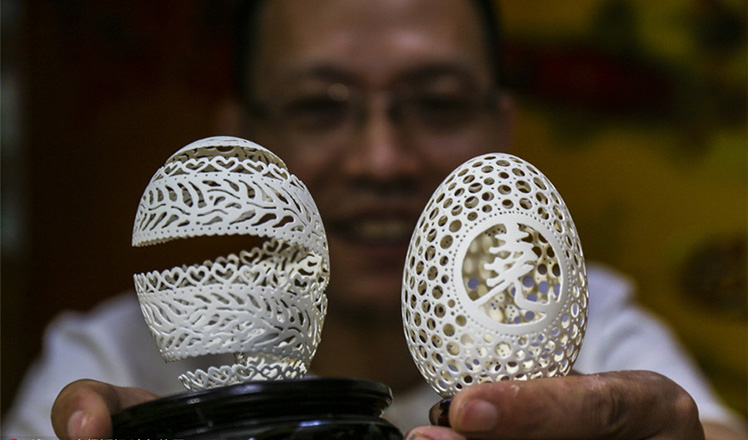Xinjiang cotton at crossroads of new Silk Road
Updated: 2016-02-19 16:52
By Reuters and China Daily in Aksu, Xinjiang(China Daily USA)
|
||||||||
|
Farmers harvest cotton in Changji, Xinjiang. Chen Peng / Xinhua |
Cotton to garments
More than 60 percent of China's cotton crop is grown in Xinjiang. It's a major advantage for companies that process the fiber into cotton thread to be close to supplies. The automated spinning factories also benefit from electricity prices around half those in coastal provinces.
Spinning needs relatively few workers. Creating 1 million textile jobs will require a build-out of the entire industry chain, from dyeing to weaving to garment production. And that poses a far greater challenge than attracting more spinners.
Dyeing, bleaching and washing of fabric would demand substantial supplies of water in the arid region. Much of Xinjiang, including Aksu, is classified as "high risk" for water stress by the nonprofit World Resources Institute. The institute has designated Shihezi and Kuerle, two cities also targeted for major textile expansion, as "extremely high risk".
Aksu is consulting with textile companies on plans to build a 50,000-metric ton wastewater treatment facility to handle discharges from future dyeing operations, said Youngor's Xu, who has attended recent government meetings on the issue.
A similar facility is also under discussion for Shihezi, near Urumqi, but some companies are wary of proceeding with dyeing in the area.
"We are not sure whether the capacity of the facility could meet all the demand and protect the environment from damage," said Zhao Yang, general manager of three Xinjiang spinning factories owned by shirt maker Esquel in Hong Kong.
"Compared with Guangdong, where our fabric mill sites are, Xinjiang's water is very scarce," he said.
Xinjiang's location, more than 4,000 kilometers from Shanghai in the east or Guangzhou to the south, is also a hurdle for companies rushing to meet tight deadlines for overseas clients, Xu said.
Like Youngor, Esquel, maker of men's shirts for brands such as Lacoste, Tommy Hilfiger and Ralph Lauren, has no plans for downstream operations in Xinjiang, Zhao said.
- Missing children found safe in nearby village
- Rich Chinese splurge on sportswear as luxury's lustre dims
- Urgent remedy sought for pediatrician shortage
- China starts safety check for school buses as new semester draws near
- Ticket scalpers face crackdown at Beijing hospitals
- Judicial DNA test in hot demand after policy change
- Classic Car Show kicks off in London
- Balkan, Austria police agree to register refugees on Macedonian border
- Turkey blames Kurdish militants for Ankara bomb; vows reprisals
- Britain scrambles fighters to intercept Russian bombers
- Chinese community to protest against Peter Liang's verdict
- Car bomb attack on military in Turkish capital kills 28

 Chinese photographers' work shines in major photo contest
Chinese photographers' work shines in major photo contest
 88th Academy Awards Governors Ball Press Preview
88th Academy Awards Governors Ball Press Preview
 Egg carving master challenges Guinness World Record
Egg carving master challenges Guinness World Record
 Missing children found safe in nearby village
Missing children found safe in nearby village
 Madonna's world tour lands in Hong Kong
Madonna's world tour lands in Hong Kong
 Producing high-speed rail tracks
Producing high-speed rail tracks 
 Surreal world created by Canadian photographer
Surreal world created by Canadian photographer
 Lanterns light up the night across China
Lanterns light up the night across China
Most Viewed
Editor's Picks

|

|

|

|

|

|
Today's Top News
Investigation for Nicolas's campaign
Will US-ASEAN meeting be good for region?
Accentuate the positive in Sino-US relations
Dangerous games on peninsula will have no winner
National Art Museum showing 400 puppets in new exhibition
Finest Chinese porcelains expected to fetch over $28 million
Monkey portraits by Chinese ink painting masters
Beijing's movie fans in for new experience
US Weekly

|

|









